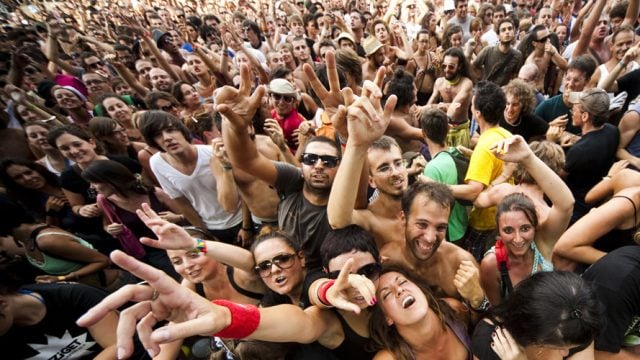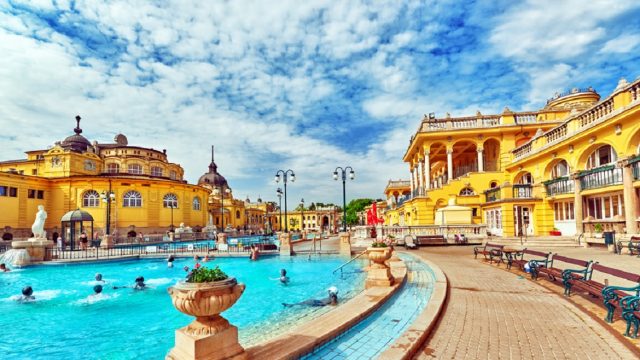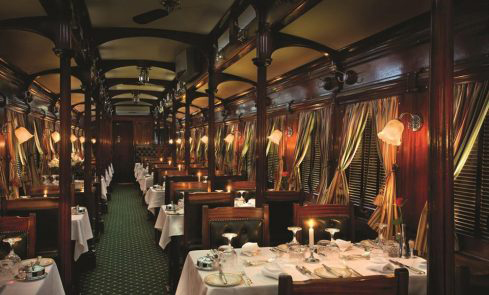Budapest, the capital of Hungary, is a very interesting place. One should always put the city on
Take in the Danube
The banks of the Danube, classified as an UNESCO World Heritage site, are lined with stunning architecture like the Országház Parliament building and the Buda Castle. Whether admiring its famous bridges or cruising the river itself on an evening boat tour, the Danube rivals the Seine in both beauty and bustle. If you want to combine sightseeing with exploring, the BKK ferry from south Buda to north Pest is the way to go. You can stop off at any of the ferry’s eight terminals for a better look, or to sample the city’s shopping and cuisine.
Get pampered
The use of communal and medicinal bathhouses in Budapest dates back to Roman times, taking advantage of the city’s plentiful thermal springs to become a part of daily life. Although no Roman-era bathing structures survive today, plenty of Turkish ones dot the city, including the Király Baths built during the Ottoman Empire. The most famous of the Turkish bathhouses is the 16th century Rudas Baths, where you can experience the opulence of empires past as well as modern additions like a rooftop pool and Finnish sauna. For truly palatial pools, though, you must visit Szechenyi Baths in District IX.
Shop ‘til you drop
The city center of Pest is where you’ll find the best shopping districts, including Váci utca, Fashion Street, and Andrássy Avenue. Think of Andrássy as the Bahnhofstrasse of Hungary – this is where you’ll find your Louis Vuitton and Roberto Cavalli – while Fashion Street is more like London’s Oxford area. There, you can shop at Tommy Hilfiger, Hugo Boss, and Lacoste. Váci utca (that’s utca for street) is actually the most famous of the three, and makes for a full-day excursion with its many shops and cafes. It runs from Vörösmarty Square in the heart of downtown all the way to Központi Vásárcsarnok, the largest indoor market in Budapest.

Feed your photography habit
The Hungarian Parliament Building is a focal point for many photographers and tourists for its eclectic-style architecture that blends neo-baroque with Romanesque and Gothic elements. Guided tours of the interior include grand staircases lined with red carpets, walls fitted with frescoes and stained-glass windows, and ornate halls shining with gold and chandeliers. Its famed Domed Hall showcases the Crown of St. Stephen, Hungary’s holiest national artefact. Other shutter-worthy sights include the iconic Széchenyi Chain Bridge and Budapest’s Royal Palace, home to a labyrinthine series of underground caves that once held prisoner Count Dracula himself. Also known as Buda Castle, the palace sits on a hill filled with cobblestone streets, Baroque houses, shops, and historic landmarks.

Drink and be merry
Budapest’s ruin bars, or romkocsma, have been rising in popularity over the last decade. No, these aren’t ancient watering holes that have been updated; they’re new bars, built in the “ruins” of abandoned shops, apartments, and other buildings in the old Jewish Quarter (District VII) that were much neglected after World War II. As a result, the bars are often sprawling complexes with inner courtyards, and feature themed rooms, eclectic décor, and best of all, cheap drinks! Some, like the Corvin Club, are proper nightclubs with techno parties and a rooftop terrace. At Fogas Ház, you’ll find a more hipster vibe, combining an artist studio and bike shop with packed crowds and rocking parties.

Raise the cultural bar
Budapest is the perfect place to peruse fine art galleries, history museums, and Roman ruins. In fact, the Aquincum Museum sits within the ruins of a complete Roman town with houses, courtyards, and fountains to explore at your leisure before (or after) checking out the various objects and paintings on display at the museum proper. Another must-see for culture enthusiasts is the Hungarian National Museum, a neoclassical building in District VIII with seven permanent exhibits of architecture, statuary, and historical artefacts dating to Antiquity. If art is more your thing, the Hungarian National Gallery houses a massive collection of Hungarian art, tracing the country’s history back to the 11th century, while the Museum of Fine Arts in Heroes’ Square houses great works from all over the world and has been operating for over 100 years.

Awaken your spirit
Budapest has long been a site of both Jewish and Christian worship and as a result, you’ll find awe-inspiring religious buildings and history as you walk its streets. The Great Synagogue, featuring Romantic and Moorish architecture, contains a museum, Holocaust Tree of Life Memorial, and holy Jewish artefacts from centuries past. The neoclassical Basilica of St. Stephen and neo gothic Matthias Church are two beautiful but different styles of Catholic cathedrals, both of which contain ecclesiastical treasures and holy relics, including the hand of St. Stephen himself. Matthias Church is located on Castle Hill and has been operating since 1015. Both have visiting hours but you’ll get a more authentic (and free!) experience by attending a service.

Brush up on your military history
Walk through Hungary’s grim past at the Terror Háza and Citadella, two buildings that have some seriously shocking stories to tell. The House of Terror on Andrássy Avenue is Budapest’s former secret police headquarters, the site of torture and imprisonment during the country’s two terror regimes. The museum was commission in 2000 to commemorate the victims of torture and interrogation; in it, you’ll find photos of victims and torturers that will chill you to the bone. An imposing (though obsolete) structure, the Citadella sits atop Gellért Hill where it was built during the Hapsburg Empire to defend against insurrection. Unfortunately, it’s no longer open to the public, but it’s worth the walk to see the Freedom Statue and the view of Budapest from the top of the hill.

Eat and eat
Hungarian cuisine is hearty, savoury, and sometimes spicy – the ultimate comfort food and a truly gastronomic experience whether you’re an amateur foodie or cuisine connoisseur. Soak in the culture (and goose-liver parfait) at the 130-year-old Múzeum in south Pest or try some authentic beef goulash at the family-owned Barack & Szilva, which you’ll find in the Jewish Quarter. Alight at Egyetemváros for dinner and live music on the water at A38 – a decommissioned Ukranian ship that’s been converted into a restaurant and cultural center.
Serene on the green
If you’re going in the summer like me, you can’t miss out on Budapest’s parks and gardens, some purely for relaxation and others full of history. If you prefer the former, you’ll need to visit Károlyi Garden, a French-style, gated park with colourful flowers, scenic fountains, conjoining pathways, and plenty of shady trees. Memento Park, on the other hand, boasts 40 statues marking Hungary’s socialist past, as well as a former barracks-turned-exhibition centre. City Park is perhaps the largest, sprawling out over a square kilometre and dotted with galleries, museums, and even a castle or two. Enter through Heroes’ Square and explore the buildings or delve deeper into the park for some botanical bliss.

So, what are you waiting for? Pack you bags and head for Budapest today!
Just in case: Budapest comprises of Buda and Pest!
Getting there: Carriers such as Jet Airways, Lufthansa and Aeroflot among others, fly from major Indian cities like New Delhi, Mumbai, Chennai etc with a halt in Europe.
More information: stagkissbudapest.com
Hungary
International
Things To Do in Budapest





